
A few weeks ago our studio, Apophenic Ecologies with Adam Fure and visiting professor Matias del Campo, finished up with an amazing final review. Considering we had almost as many critics as students in the studio, it was a little intimidating. Fortunately, each of the 3 student teams produced awesome work and it was easily one of the best and most productive final reviews I have been participated in.
Anyways, below is our final project brief and images from the final review. Enjoy!

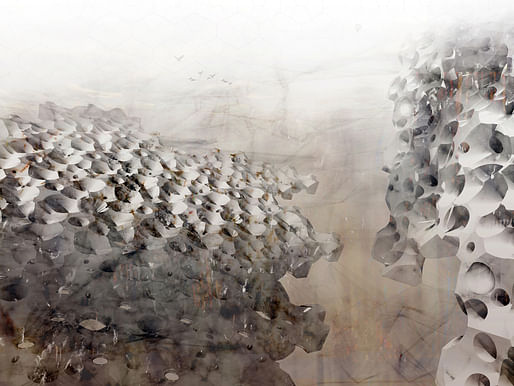
deferentialCONSTRUCTIONS takes its cue from the phenomenon known as Apophenia, which is the perceiving of meaningful patterns in seemingly random or meaningless data. If used advantageously, apophenia can allow for multiple readings within a single spatial environment. The project attempts to leverage a basic architectural proto-condition to test out the implications and possibilities inherent within this phenomenon. The goal is to create a system which, by oscillating between complete control and a total lack of control, allows its users to interpret their environment in a variety of ways. The architectural proto-condition at play is the aperture and the construction pedagogy is that of a panelized wall system.
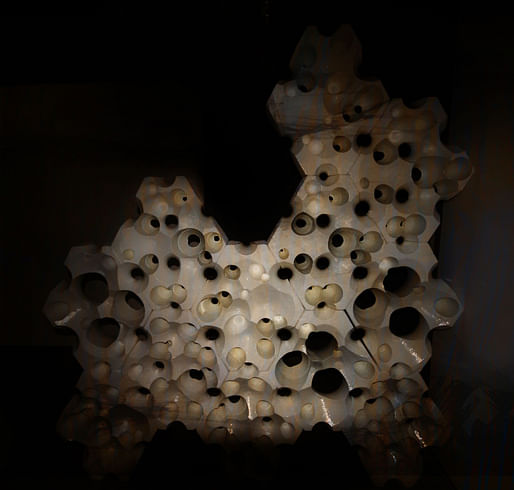
Running in parallel is an ambition to use parametric design software and large scale fabrication technologies to create systems of control that maximize output while minimizing input. The idea is to develop simple methods of design which are able to generate exotic and complex outcomes through the use of emerging fabrication technologies. Embedding within this logic is the notion that the designer is removed from the final representation. By taking control of the final outcome away from the designer, the user is free to create his own realities and fictions through an apophenic response to an amorphous environment.
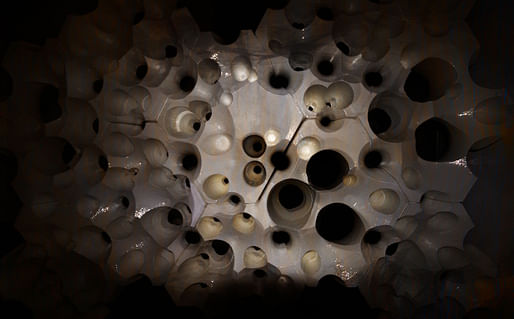
To accomplish these goals the work has utilized various parametric design software as well as emerging technologies such as 5-axis robotic milling for fabrication. In an attempt to begin from a highly controlled condition, which would then be filtered through various levels of unbridled form generation, the work began with basic grid logic. This gave the project a solid foundation to build from while allowing for alteration and corruption through future processes. Through rigorous geometric and patterning studies, a Cairo Tessellation grid pattern was finally settled on due to its ability to elicit multiple readings of form and logic. The embedded flexibility of the Cairo Tessellation pattern would allow for it to later be used to form the basis for a panel system.
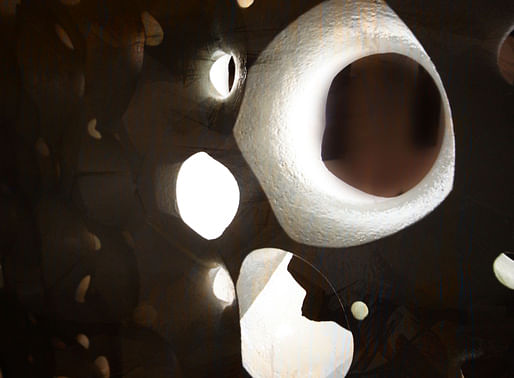
After extruding the tessellation pattern to give the system more depth, restraints began to be relaxed and allowances were made for less and less control over the system. This lack of control was all based on the logics of the fabrication systems at play. In order to generate an aperture within a solid mass, the 5-axis robot utilizes what is called a “swarf” cut. This particular cut operation needs only a top and bottom curve diameter in order to generate a Boolean operation. The Swarf cut was chosen for its simple Boolean logic and formed the basis for the parametric design efforts.

In order to generate apertures in the Cairo tessellation panels, computational design strategies were utilized to randomly generate top and bottom curves which would then be fed to the fabrication software in order to generate Boolean operations. Through these efforts a minimum amount of parametric modeling was needed in order to generate aperture rich architectural prototypes.

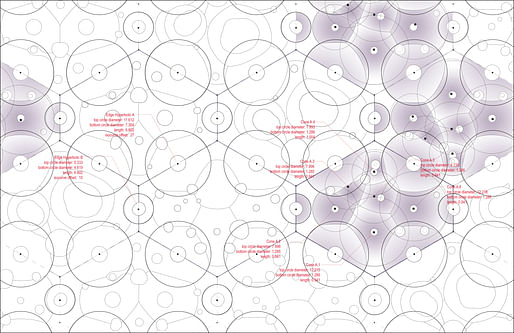
The panelization of the project was essential to creating a pattern of apertures that could repeat endlessly to conform to any size and shape required. To allow for randomized and control free panel aggregation there needed to be a second level of control fed back into the system. By manually generating “universal apertures” for all the Boolean operations located on the edges of each panel, a catalogue of panels was generated, each with varied degrees of opening, but all with the same edge conditions. This act of control within the system allowed for a complete relaxation of control in the aggregation of panels to create wall systems and environments. Thus the project achieves its goal of oscillation between control and a lack of control. First, the system is controlled through the implementation of the base grid; next system control is relaxed through randomized Boolean curve generation and aperture creation. Finally, control is fed back into the system through the manipulation of panel edge conditions to allow for an aggregation that is completely independent of control.

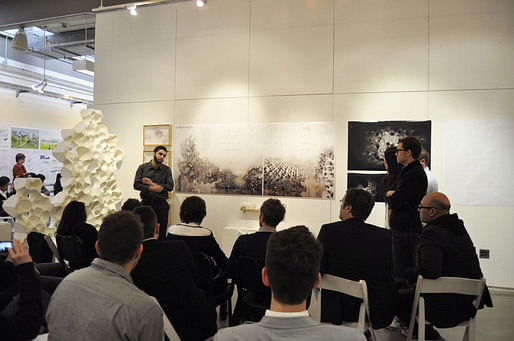
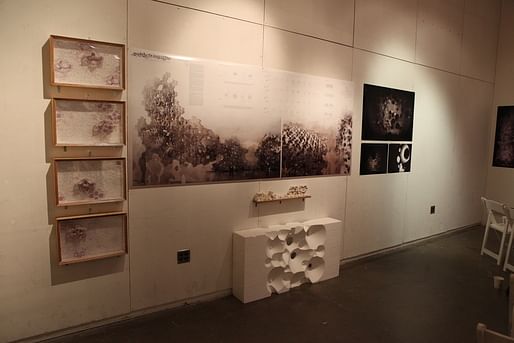
All work shown above was done in cooperation with my group members:
Mark Wright
Ning Zhou
Bennett Scorcia
I am a graduate student and an entrepreneur at the University of Michigan Taubman College where my studies are focused on leveraging design ideas across multiple scales and platforms. Meeting at the intersection between design, tectonics and fabrication, I am continually exploring how a design idea can navigate complex material and production systems and evolve into fully realized architectural artifacts.
3 Comments
so where are the '.. multiple readings within a single spatial environment.'? to me you generated a lot of same-ness when i was expecting to see a lot of different-ness from within the aforementioned single spatial environment.
The prototype we constructed is made of (4) unique panels, each with a different degree of 'openness' ranging from very large apertures to only a few small ones. We made (3) panels of each type so the prototype has 12 total panels which can be configured in any way desired due to each panel having 'universal edge conditions'.
The images only show a single configuration (which alludes to the sameness you are seeing) when in reality the system can be configured in such a way as to create either a vary porous or contained condition depending on the desired environment.
Thanks for the comment!
Your work is great and very well represented. (@FRaC) There is a condition of "sameness", but that sameness is establishing a "systems" within which variations can be distinguished and read. Just like letters are always the same, but variations in their order create a variety of readings. (@Harold) I think your argument is fullproof, I'm just curious as to the types of readings that this is producing (aesthetic, symbolic, cultural, etc) ? But that's a question you probably shouldn't answer lol.
Block this user
Are you sure you want to block this user and hide all related comments throughout the site?
Archinect
This is your first comment on Archinect. Your comment will be visible once approved.